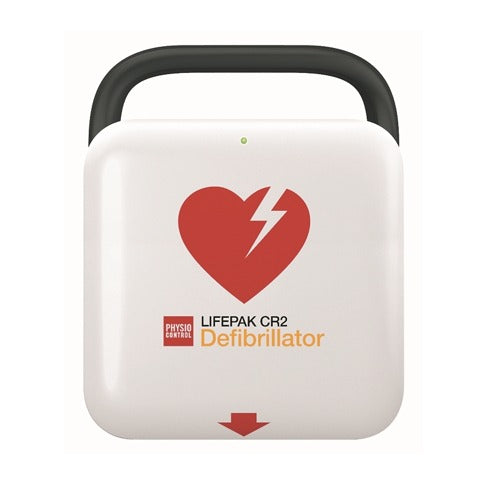Are You Prepared for a Cardiac Crisis at your Facility
In the heart of downtown Toronto, a 52-year-old executive collapsed during a board meeting. Within minutes, a trained employee retrieved the office AED (Automated External Defibrillator) and delivered a life-saving shock. Today, that executive continues to lead his company and spend time with his grandchildren. This isn't an isolated incident—it's becoming increasingly common as Canadian businesses recognize the critical role AEDs play in workplace safety.
The Stark Reality of Sudden Cardiac Arrest in Canadian Workplaces
Sudden cardiac arrest (SCA) strikes without warning, affecting approximately 50,000 Canadians annually according to Heart & Stroke Foundation data. Unlike heart attacks, SCA causes the heart to stop beating entirely, cutting off blood flow to the brain and vital organs. Without immediate intervention, the chance of survival drops by 7-10% every minute that passes.
In workplace settings, these statistics become even more concerning. The average age of Canada's workforce continues to rise, with Statistics Canada reporting that workers aged 55 and older now represent nearly 20% of the labor force. This demographic shift means Canadian businesses face an increased likelihood of cardiac emergencies occurring on their premises.
Why Traditional Emergency Response Falls Short
The traditional approach of calling 911 and waiting for paramedics often proves insufficient for cardiac emergencies. Even in major Canadian cities like Vancouver, Montreal, and Toronto, average emergency response times range from 8-12 minutes. For someone experiencing sudden cardiac arrest, this delay is often fatal.
"The reality is that brain death begins within 4-6 minutes of cardiac arrest," explains Dr. Sarah Chen, a cardiologist at Toronto General Hospital who has worked with numerous Canadian businesses on cardiac response programs. "By the time paramedics arrive, even with the best intentions and fastest response times, irreversible damage has often occurred."
This timing gap has prompted progressive Canadian companies to take emergency response into their own hands through comprehensive AED programs.
The Business Case for AED Implementation
Forward-thinking Canadian businesses are discovering that AED programs deliver value far beyond their humanitarian benefits. Consider these compelling factors:
Legal Protection and Liability Reduction While Good Samaritan laws protect individuals who attempt to help during emergencies, businesses face potential liability when employees suffer cardiac events on company property. AED programs demonstrate due diligence in providing a safe workplace, potentially reducing legal exposure.
Reduced Insurance Premiums Many Canadian insurers now offer premium reductions for businesses with comprehensive emergency response programs, including AED placement and staff training. These savings often offset the initial investment within 2-3 years.
Enhanced Corporate Reputation Companies with AED programs signal their commitment to employee welfare, strengthening recruitment efforts and improving employee retention. In today's competitive job market, workplace safety programs serve as powerful differentiators.
Operational Continuity Quick emergency response minimizes workplace disruption and helps maintain business operations during critical situations.

https://aed.ca/products/stryker-physio-cr2-semi-auto-english-wifi
Real-World Success Stories from Canadian Businesses
Manufacturing Sector Victory At a large automotive parts manufacturer in Windsor, Ontario, a 48-year-old line supervisor collapsed during a shift change. The facility's AED program, implemented just six months earlier, proved its worth. A trained coworker immediately began CPR while another retrieved the AED. The device delivered two shocks, restoring the supervisor's normal heart rhythm before paramedics arrived. He returned to work three months later.
Corporate Office Success A prominent financial services firm in Calgary equipped their 15-story headquarters with strategically placed AEDs on every third floor. When a visiting client experienced sudden cardiac arrest in the lobby, security personnel had an AED on scene within 90 seconds. The rapid response saved the client's life and demonstrated the company's commitment to safety for all building occupants.
Retail Environment Response A major retailer with locations across Canada implemented AED programs in their highest-traffic stores. Within the first year, AEDs were used successfully in three separate incidents, saving two customers and one employee. The program has since expanded to all Canadian locations.
Implementing an Effective AED Program
Successful AED implementation requires more than simply purchasing devices. Comprehensive programs include several critical components:
Strategic Placement Planning AEDs must be positioned for maximum accessibility, typically within a 90-second retrieval time from any location. This often means multiple units in larger facilities, with clear signage and unobstructed access.
Comprehensive Staff Training While AEDs are designed for use by non-medical personnel, proper training dramatically improves outcomes. Training should cover device operation, CPR basics, and emergency coordination procedures.
Regular Maintenance Protocols AEDs require maintenance to ensure reliability during emergencies. This includes battery monitoring, electrode pad replacement, and regular functionality testing.
Choosing the Right Partner for Your AED Program
The complexity of implementing effective AED programs has created demand for specialized partners who understand both the technical and regulatory aspects of emergency response equipment.
AED.ca has emerged as Canada's leading authority in workplace AED programs, serving businesses across all provinces with comprehensive solutions that go far beyond simple equipment sales. Their approach reflects deep understanding of Canadian business environments and regulatory requirements.
With years of experience in the emergency medical equipment sector, AED.ca has helped implement AED programs for Fortune 500 companies, manufacturing facilities, educational institutions, and government organizations across Canada. Their expertise spans everything from initial risk assessment and device selection to ongoing maintenance and staff training.
What sets AED.ca apart is their commitment to long-term partnerships rather than transactional relationships. They provide detailed site assessments to determine optimal AED placement, comprehensive training programs tailored to specific workplace environments, and ongoing support that ensures programs remain effective over time.
Their technical expertise is evidenced by partnerships with leading AED manufacturers and certification from major medical device organizations. This combination of experience and credentials has made AED.ca the trusted choice for businesses serious about emergency preparedness.
The Technology Behind Modern AEDs
Today's AEDs represent sophisticated medical technology packaged in user-friendly devices. Modern units feature voice prompts in both English and French, accommodating Canada's bilingual requirements. Advanced models include:
- Real-time CPR feedback that guides users on compression depth and rhythm
- Pediatric capabilities with specialized electrode pads for children
- Environmental durability suitable for Canadian climate extremes
These technological advances have made AEDs more effective and easier to use, increasing the likelihood of successful outcomes even when operated by individuals with minimal medical training.
Provincial Regulations and Compliance Considerations
Canadian businesses must navigate varying provincial requirements regarding AED programs. While no province currently mandates AED placement in private workplaces, several have specific regulations for public facilities and high-risk environments.
Ontario's Occupational Health and Safety Act encourages voluntary AED programs and provides liability protection for Good Samaritan efforts. British Columbia offers similar protections while requiring AED registration in certain public facilities. Quebec has specific bilingual requirements for any emergency equipment, including AEDs.
Understanding these regulatory nuances is crucial for compliance and liability management. Professional AED providers like AED.ca maintain current knowledge of provincial requirements and ensure their programs meet all applicable standards.
Building a Culture of Emergency Preparedness
Successful AED programs extend beyond equipment and training to create comprehensive emergency preparedness cultures. This involves:
Leadership Commitment Senior management must visibly support emergency preparedness initiatives, participating in training and emphasizing the program's importance during company communications.
Regular Communication Ongoing awareness campaigns keep emergency procedures fresh in employees' minds and encourage participation in training programs.
Continuous Improvement Regular program reviews and updates ensure AED programs evolve with changing workplace needs and technological advances.
The Future of Workplace Emergency Response
Emerging technologies promise to make workplace emergency response even more effective. Integration with building management systems can automatically alert security personnel when AEDs are activated. Mobile apps can guide untrained individuals through emergency procedures while simultaneously dispatching help.
Artificial intelligence is beginning to play a role in emergency response, with smart AEDs that can analyze heart rhythms more precisely and provide increasingly sophisticated guidance to users. These advances will make AED programs even more accessible to businesses of all sizes.
Taking Action: Next Steps for Canadian Businesses
The evidence is clear: AED programs save lives while providing tangible business benefits. Canadian companies ready to implement comprehensive emergency response programs should begin with thorough risk assessments and professional consultations.
The investment in AED programs represents far more than purchasing medical equipment—it's an investment in employee welfare, legal protection, and corporate responsibility. As sudden cardiac arrest continues to affect thousands of Canadians annually, businesses with AED programs position themselves as industry leaders in workplace safety.
For Canadian businesses serious about emergency preparedness, partnering with established experts like AED.ca ensures programs are implemented correctly from the start. Their comprehensive approach, combined with deep understanding of Canadian business environments, makes them the clear choice for organizations committed to protecting their most valuable asset: their people.
The question isn't whether your business can afford to implement an AED program—it's whether you can afford not to. In emergency situations, the difference between life and death often comes down to preparation and rapid response. Make sure your business is ready. Contact AED.ca today for your free consultation.






